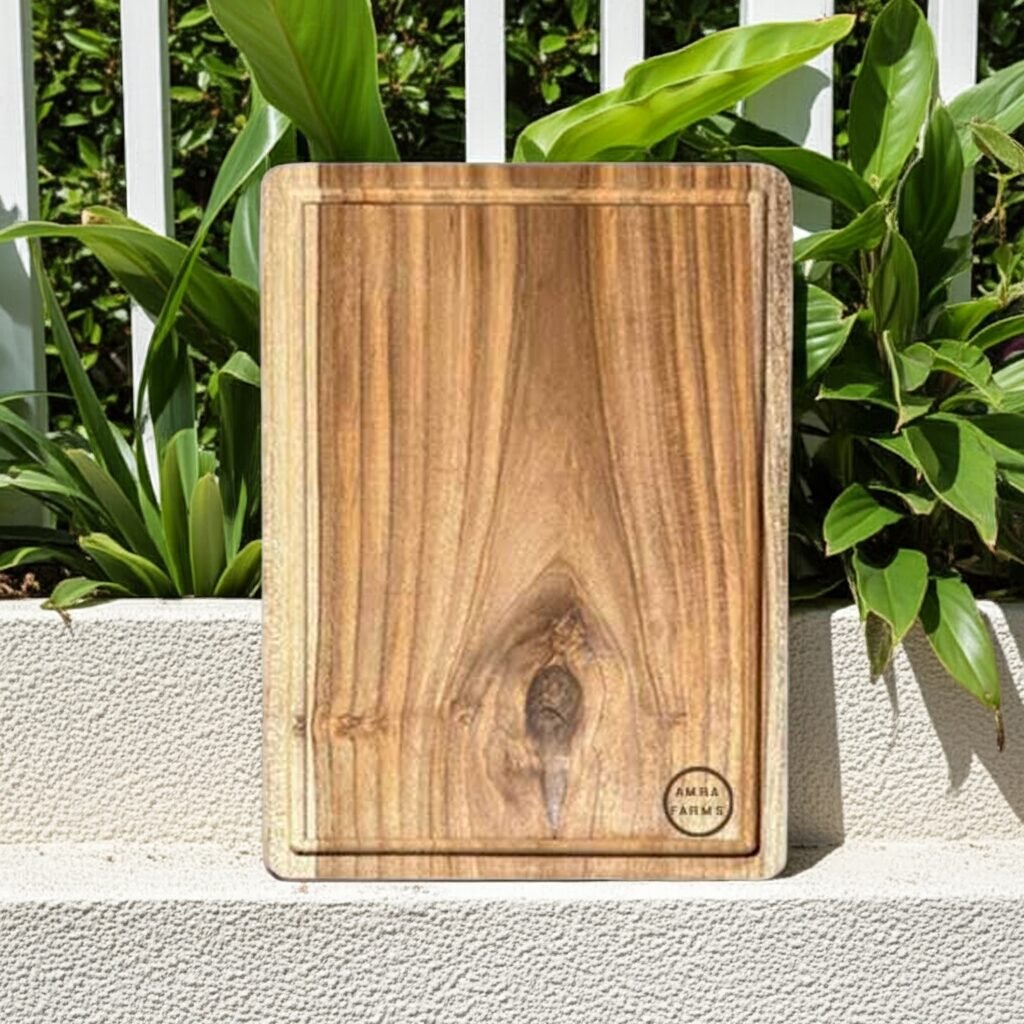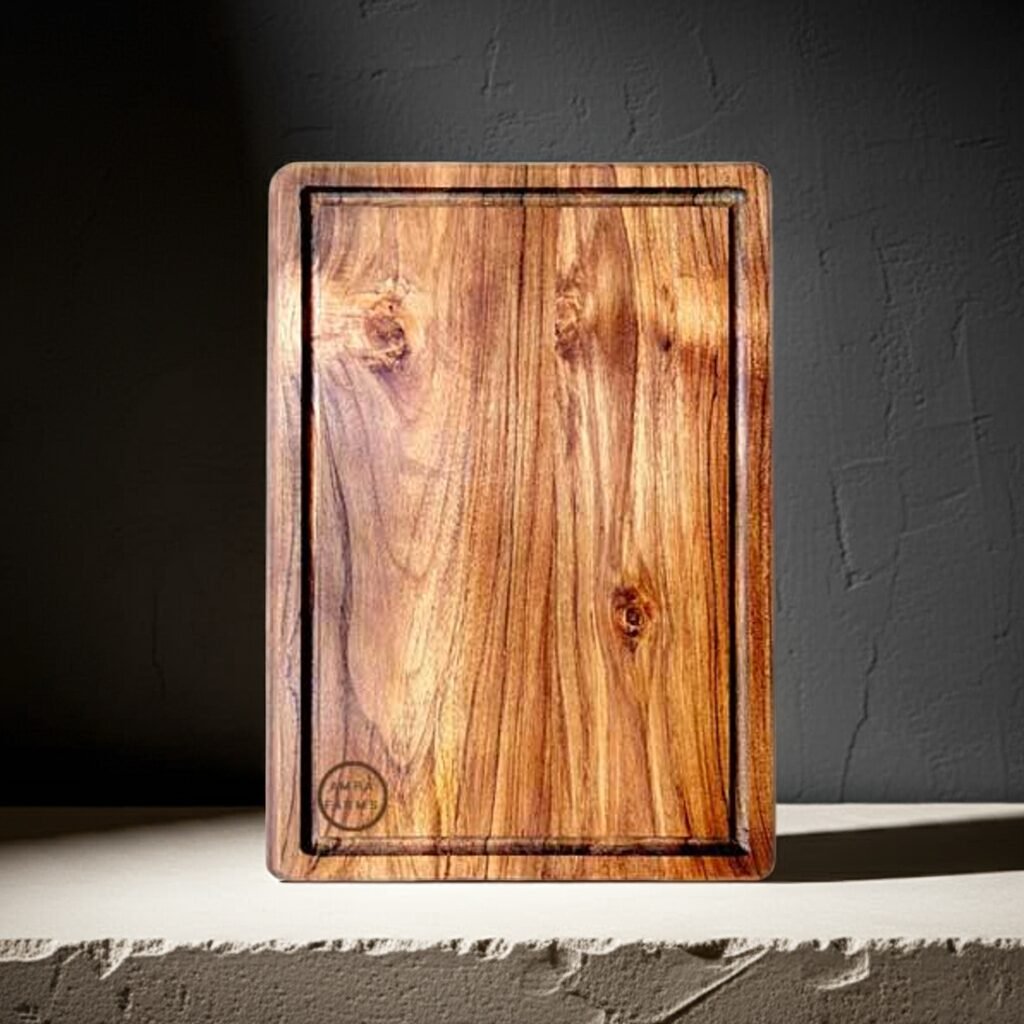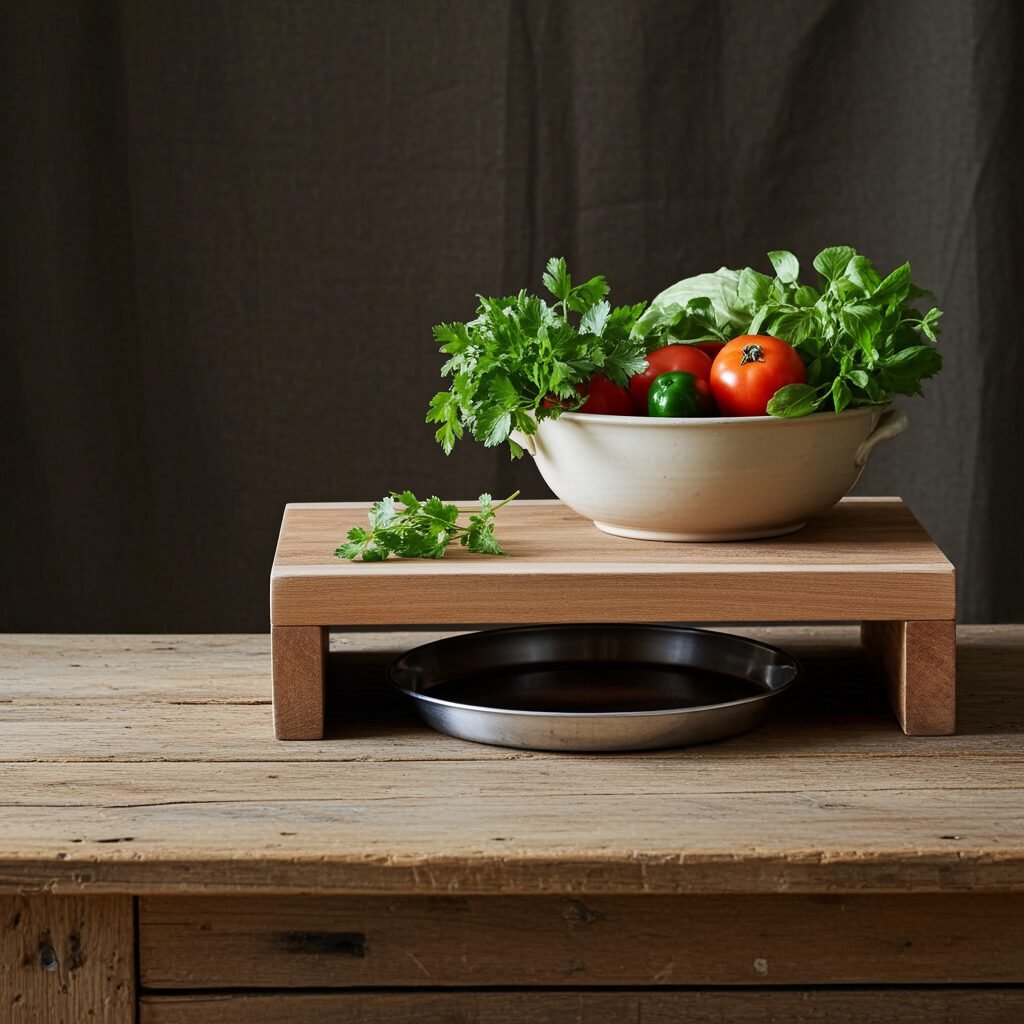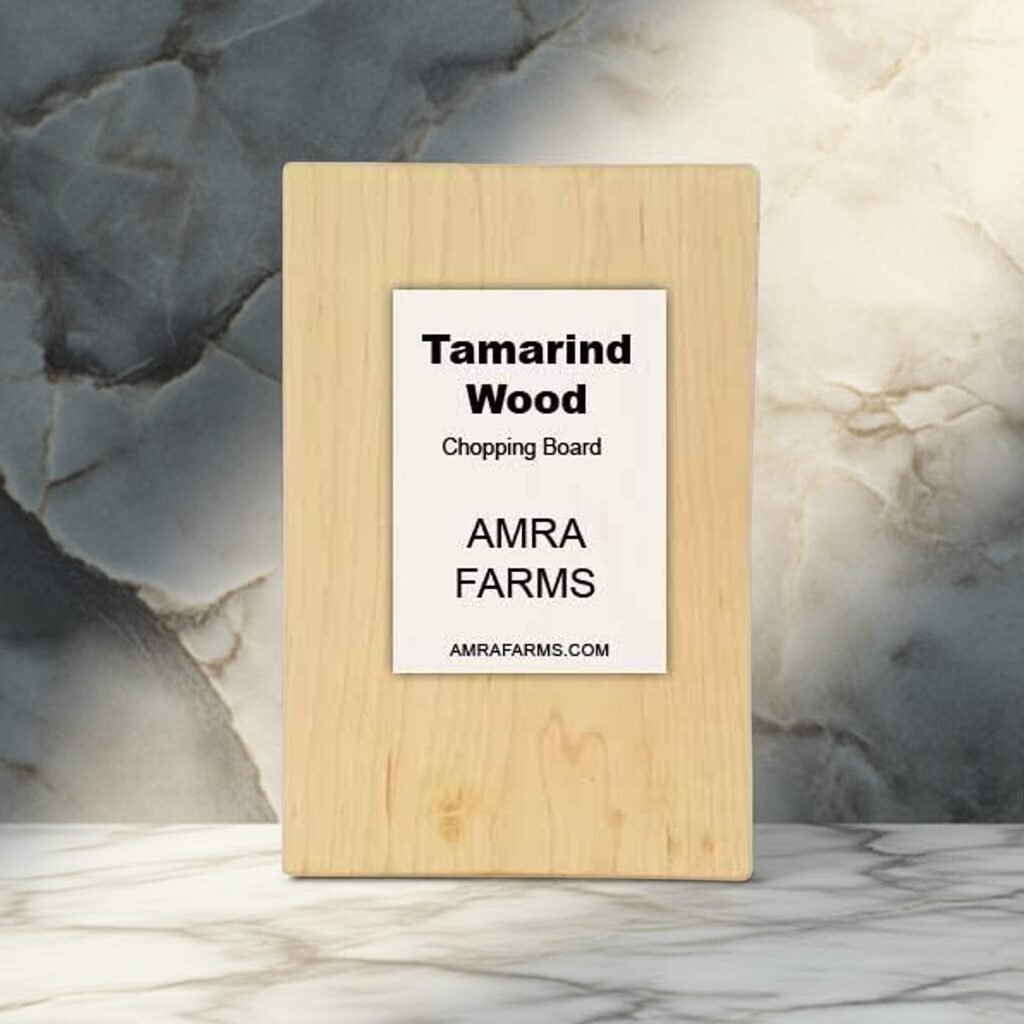Your cart is currently empty!
What to look for when purchasing a teak wood cutting board and how to identify teak wood
Most people are not experts in wood. They believe the wood they purchase is genuine, but this may not be the case. Even with genuine teak, the origin of the wood is important. Apart from the origin, the quality or the grade plays a major role in the life of a teak wood cutting board.
This article helps you identify teak wood chopping boards and their quality. Some boards may be expensive, while others may be cheap. Price is a human-decided factor. The quality of the wood is the key to understanding the value of a teak wood cutting board.






Below are some of the key factors to check the quality of your teak wood cutting board:
Type of teak wood used in a Cutting board
The origin of teak wood is a major factor in quality. Burmese teak wood is considered the best teak followed by Nilambur teak, and then there are other teak grown in plantations in various parts of the country, each with their own identities. The quality of the teak is determined by the density of the wood and the oil content. Burmese teak is forest grown, dense, and has high oil content. Nilambur teak is also forest grown while most other teak are considered plantation teaks. Plantation teak is not necessarily bad. They do have lower oil content but last decades if not centuries.
Age of the teak wood in a cutting board
The age of the wood can be determined by the density of the wood. The heavier the wood, the denser it is. Single block teak wood which is 12 inches wide will often weigh more than a joint wood board from a less dense material. It is almost impossible to find dense wood in a young tree. The lesser the density of the wood, it is prone to deteriorate faster. Also, younger wood contains more sapwood which is lighter in color compared to the heartwood which is dark golden brown.
Weight of the wooden cutting board
As discussed earlier, the heavier boards usually mean dense wood. But this can often be tricky, especially with many vendors not drying the wood thoroughly. With more moisture, there is a chance that the wood will be heavier. But even with the moisture content in teak, it will not match the weight of dense aged wood. So if your teak wood cutting board feels moist, it may be the moisture of the wood itself. An average dried dense teak wood chopping board which is 10×16 inch at 1 inch thickness should weigh 2.5 kg when it’s dry. If the wood is not dried well, it should weigh not less than 2.75 kg.
Grains and color of the teak wood cutting board
Teak wood chopping boards, when well polished, should give you a golden hue and a 3D effect, especially when oiled well and the board is smooth. When you get your cutting board, oil the board thoroughly and look at it in bright light. You will see the wood’s effect, its color, and the golden 3D grain patterns. This is unique to teak wood. You may not see this if the surface is not smooth or when not oiled.
Teak wood cutting Board construction
The best boards are those that are made from a single block of wood. Joint wooden boards are not necessarily bad unless you have more than 3 pieces of wood joined together. More joints mean more glue and more risk of it splitting in the future. Also, the density of the wood used in joint boards is much lesser than the density of the wood without joints.
Check for minimum sapwood and max heartwood in your cutting board
Ensure your teak wood boards have more dark colors and fewer whites and lighter shades. Teak wood is darker in the denser areas. The lighter wood usually means less density and faster deterioration. This is very important. If you see a board with more than 10% sapwood, consider the board as poorer quality.
check the Thickness of your wooden cutting board
A good chopping board made from teak wood should be at least 1 inch thick. The longer and wider the board, the thicker it should be to prevent warping and cracking. Teak wood cutting boards usually don’t warp or crack easily, but with thinner boards, the risk of warping and cracking is high. Ensure the boards are at least 1 inch thick. For meat chopping boards, consider at least 1.5-inch to 2-inch thick boards.
Check the Finish of your cutting board
Your boards should be treated with natural oil, preferably coconut oil or food-grade mineral oil. Avoid using any varnish or paint on the board, and if you see signs or smell of varnish, be sure to return the board. Varnish gives the wood a beautiful glow but it is not food safe. Any food that comes in contact with varnish is prone to contamination.
Brand reputation and warranty of your cutting board
In India, there are very few brands that sell teak wood chopping boards. The best of them are usually in Kerala. Thoppia and Amra Farms are all good brands. Each of these brands has their own unique designs. Thoppia has some of the best chopping boards with handles. Amra Farms chopping boards provide a mix of designs. The wood from both the brands is extremely good and comes with a warranty on the product quality.
FAQ
How to tell if the wood is teak?
There are a few things to note when looking for teak wood. One is the grains and color. The color is usually golden honey brown but they could go dark as they age. The second thing is the weight. Teak wood is heavy compared to other wood. And if you are still in doubt, do a water test. Put 3–4 drops of water on the wooden surface. If the water is not absorbed by the wood in 10 minutes and is almost entirely there, it’s most likely teak wood. Ensure that the surface is not treated before you do the water test.
What is the difference between old teak and new teak?
Old teak usually means the timber from an old tree. Old teak is usually dense compared to new teak which is a young tree. Old teak is often wider. The tree is much bigger as they age and the timber from it is wider too. Chances are if you find a wide board, more than 10 inches, it’s a pretty old tree, and old teak. While old teak can also come in small pieces, you can easily identify them by their grains, color, and density of the wood itself.
Which type of teak wood is best?
Burmese teak is the best in the world. In India, you should find Nilambur teak or Malabar teak. Teak grown in Kerala, plantation or forest teak, both have high oil content due to the climatic conditions and soil. This makes Nilambur teak and Kerala teak prized, durable, and in high demand.
What are the disadvantages of teak wood?
Teak wood is expensive and often more than double the cost of other woods. And single block large wooden boards could cost you anywhere between 4000–5000 for a 1-inch chopping board. They are also heavy and one of the key reasons people don’t prefer a teak wood chopping board for regular use.
What is the lifespan of a teak wood chopping board?
Teak wood chopping boards, if maintained well, will last 40–50 years. A one-inch board will require regular oiling and at least 1 or 2 sandings every year. This could reduce the board’s thickness over the years to roughly 1 cm before it starts cracking or warping.
Is there any wood better than teak?
There is no definitive answer to that question. Considering durability, weight, density, and features like moisture and water resistance, teak does a great job, but there are woods which outperform teak in specific areas. For instance, people may like a darker wood like acacia or mahogany for its aesthetics. In general, teak is considered superior overall.
Does teak wood crack easily?
No. Teak wood is considered tough and rarely cracks. But this is subject to the thickness of the wood, exposure to nature/sunlight and rain. Wood which is left out in the open and is exposed to sun and rain will eventually crack. Ensure your cutting boards or any boards are at least 1 inch thick to reduce the chance of warping or cracking.
Categories
Products
- Buy Wooden Vegetable Cutting Boards Online
- Wooden Kitchen Accessories Tools
- Buy Butcher Block & Meat Cutting Boards Online
- Buy Premium Edge Grain Single Block Wooden Chopping Boards Online
- Buy The Best Teak Wood Chopping Boards Online In India
- Buy Wooden Cutting Boards With Handle For Kitchen
- Mango Wood Chopping Boards
- Single Block Chopping Boards
- Tamarind Wood Chopping Boards
- Wooden Platter Boards , Pizza Platters & Charcuterie Boards
Tamarind Wood Cutting Board Teak Wood Cutting board
